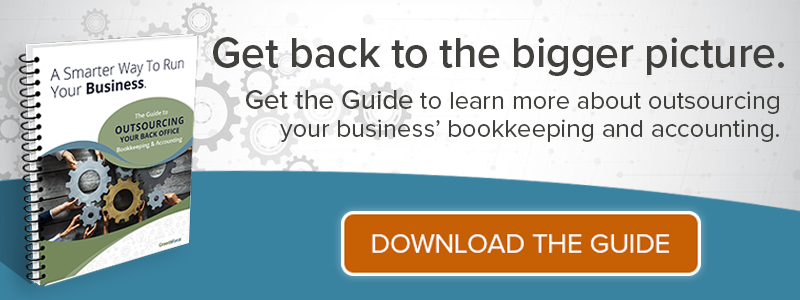5 min read


We know how technical you are. The details are critical.
While you might have a grip on the kind of bookkeeping and accounting practices your engineering business needs for taxes and regulatory compliance, is your back office equipped to serve your business's goals?
|
Key Takeaways
|
Without the proper tools, technology, and procedures, your engineering company could suffer from pricing struggles, collection difficulties, time management problems, and cash flow shortages.
To avoid the classic challenges of operating a service-based engineering business, and allow room for innovation– make sure your back office is designed with a robust accounting system...
7 Bookkeeping & Accounting Tips for Engineering Firms
1. Implement Accurate Time Tracking
When you’re making money off of people’s time, time-tracking must be an essential part of your back-office strategy.
For most businesses operating in service-based industries, like engineering, employee time is the most significant expense item in your cost of goods sold, so accurately tracking it is the only way to truly know your costs so that you can charge adequate rates for your services.
The best way to track employee time and time spent on individual projects or jobs is to automate it with a powerful application that integrates seamlessly with your QuickBooks accounting system.
One of our favorites is QuickBooks Time Tracking (formerly TSheets) because it seamlessly integrates into other accounting and payroll software. Plus, it simplifies the process of tracking employee time (billable and non-billable), allocating that time, and ensuring that your estimates and invoices reflect these kinds of project-related tasks that are otherwise difficult to quantify, cost, and allocate.

2. Pay Attention To Your Gross Profit Margins
Your gross profit margins are the key to enabling your business’s growth and combating financial challenges. Ultimately, they are the backbone for when you are reviewing your company’s finances– take the time to understand your profit margins.
Why? Well, to get technical- on top of payroll/time costs, service businesses must also properly allocate other overhead expenses to ensure all services are appropriately priced. Indirect expenses that can be tracked, divided, and allocated include items like software purchases and subscriptions, office equipment, office space, utility costs, and professional training. Although none of these overhead expenses are incurred directly as a result of completing any specific project or serving any specific client, they can be totaled, divided, and allocated based on either a number of jobs, clients, or the percent of employee time spent on specific jobs or clients.
Why is this important? When you know your costs and you know your desired gross profit margin, then you can easily calculate what your revenue (price) needs to be to achieve your target gross profit margin. Boom, you now know how to optimize pricing your jobs.
This process is called job costing, and this type of activity-based job costing is the only way for service businesses to account for the true cost of doing business in their cost of goods sold, prices, and invoicing.
3. Set Clear Payment Terms
Before accepting new jobs or clients, make sure whoever is in charge of your accounts receivables have set and agree upon very clear payment terms. It’s important your clients understand what is expected of them with regard to settling invoices.
Most importantly? Make sure these terms are in writing. Have these terms on every invoice your back office sends, and be sure to enforce these payment terms with your clients by following up on any late payments or past-due accounts.
Keep reading to find out an easier way to do this (hint: automation is your friend).
4. Focus on Forecasting
Whether you have a seasonal business or not, cash flow forecasting should be an essential tool in your bookkeeping and accounting strategy.
We strongly recommend having your bookkeeper regularly prepare a 13-week cash flow forecast.
Why? Over a period of time, cash flow forecasting records and evaluates the patterns of cash flowing in and out of your business to determine the amount of revenue generated, expenses paid, and the amount (if any) left over to spend at any given time.
When your business has established a consistent history of cash flow evaluation, you'll have the ability to forecast your company's future cash flow based on actual numbers and past performance. As a result, you should be able to anticipate and plan for cash flow shortages before they occur. This will enable you to make strategic, data-driven decisions to strongly position your company, rather than having to make reactionary decisions due to problems that have already occurred.
You can then begin assessing the drivers of your business and tracking relevant metrics to improve your company's cash flow and profit margins.
5. Continuously Improve Estimates vs. Actual
One common downfall of service businesses is the inability to accurately estimate costs.
This is largely due to the inability to accurately estimate employee time spent on various tasks and projects.
Whether looking at your company's budget as a whole or the estimates you provide to clients for each, individual job, close estimates are always desirable.
Clients will have an accurate representation of what your services will cost, allowing them to decide whether or not they can truly afford to pay you as agreed. Plus, the more accurately you're able to forecast your budgets, rein in scope creep, and estimate project costs, the stronger your profit margins and your business will be.
6. Accounts Receivables: Automate, Automate, and Automate.
Leave sloppy invoicing in the past. Automation will change the way you forever look at your Accounts Payable.
Not only will automating alleviate your staff’s time to focus on high-level, profit-earning work, but it will also help your business maintain a healthy cash flow. Businesses that tend to have a seasonal or irregular work cycle (like engineering firms) will be vulnerable to cash flow fluctuations throughout your receivables cycle and/or your financial year.
Collections can quickly become one of your biggest liabilities. Having software integrations in your accounting system can automate collections.
💡Pro Tip: If you use QuickBooks Accounting Software online, you can use a tool called Funding Gate. This is AR management portal that will help you automate the process of sending out the collection emails. You can make those emails get more direct progressively based on whether they are responsive.
7. Track the Most-Essential KPIs
Every business is different and will have a different list of key performance indicators (KPIs) to track based on its individual operations, goals, and challenges. KPIs will help get the data you need at your fingertips to help you make strategic decisions.
However, there are a few metrics that are essential for engineering firms:
- Overhead Rate - Indirect expenses divided by your direct labor represent the amount of money your business needs to generate to cover overhead expenses.
- Break Even Rate - This metric reveals the minimum revenue you must generate to cover all your costs.
- Realization Rate - The amount of revenue generated by each employee in terms of dollars per hour
- Labor Utilization Rate - The percent of time (out of a 40-hour workweek) that each employee spends directly on clients
- Gross Profit Margins - Gross profit margins allow you to see how profitable your business, individual clients, projects, and/or employees actually are. (Yes, this is so important we had to bring it up twice).
These KPIs will be highly useful for helping you identify and reach benchmarks on the path toward your long-term goals.
Team Up to Design a Powerful Back Office That Works for You — Not Against You
Although every engineer in your office is smart enough to be an accountant, we're guessing that precisely zero of you have time to learn another professional trade. If you're busy operating an engineering business, then there's no reason you need to spend your valuable time sorting out the company's back office, accounting systems, and financial management issues.
Thankfully, partnering with accounting experts enables service businesses, especially engineering firms, to leverage a powerful back office — complete with a team of accounting professionals, and the most-advanced tools and technology designed to streamline your bookkeeping and accounting processes and empower you as an engineering business leader.

.png?width=563&height=144&name=New%20GF%20Logo%20(37).png)
